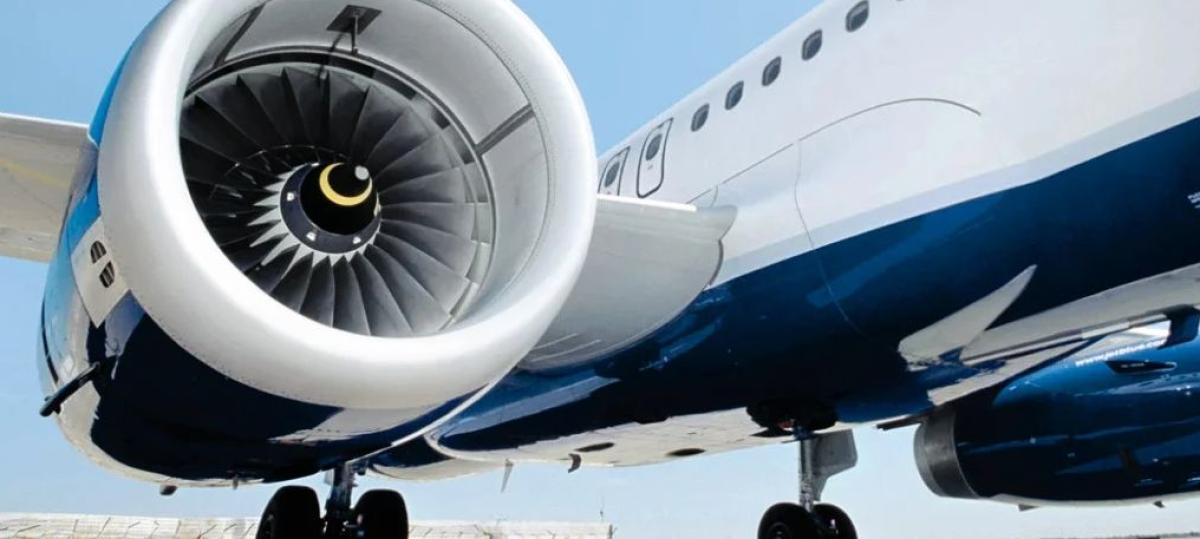In the traditional ‘Gig’ it is as if you are rolling up a wall of water

Hundreds of rowers at the same time raise their wooden chips. « Oars up »is the command of the steering people: chips vertical. The rowing boats that have already finished in earlier rounds are side by side in the bay and wait for the fastest boats that sail the final. The forest of chips in the air is proof of honor for the winners of the championship. When the sun breaks through, the shallow parts of the seawater around the British Scilly Islands light up azure blue.
More than 120 traditional wooden rowing boats participated in the rowing world championships in the ‘Pilot Gig’ last weekend, a quick rowing magnify with three rowing pans on either side. Hundreds of rowers traveled to St. Mary’s, the largest island of the ‘Scillies’, a remote archipelago sailing almost three hours from the far south -west of Cornwall. The scillies and the gigs are closely intertwined. The championships, always in the first weekend of May, form the annual highlight of the GIG community. And it grows, both in the rest of the United Kingdom and beyond.
The distances of the competitions this weekend are approximately two and three kilometers. The rowers start at sea and finish just before the harbor in St. Mary’s. There are tufts of clubmates on the quay to encourage them. Some have binoculars, although most follow the first minutes of the matches via the live stream on their phone. After all, the boats are still too far away to see who is in front of it.
/s3/static.nrc.nl/wp-content/uploads/2025/05/06142920/data131798983-2b9176.jpg)
Age -old tradition
Bryony Lishman is rowing with her team in the Zelda, a white lacquered boat in which you can neatly see the thousands of small copper nails that keep the wood together. Lishman was born and raised on St. Mary’s and the competition weekend means the busiest time of the year for her. « It’s crazy, but I have always loved Gig weekend. A cheerful blanket full of life falls down the island. »
« The economic importance of gig rowing is huge for us as residents, » says Lishman, who runs a bed & breakfast himself. The T-shirts and sweaters hanging in the souvenir shops were designed by a local artist especially for the rowing weekend. In addition, all hotels, Bed & Breakfasts and group accommodations are fully booked this weekend and there are also groups of rowers at the campsite. Some islanders rent out their house and leave for the mainland for a few days. Rowers on slippers or on bare, sandy feet buy the shelves of the local supermarket almost completely empty every day. Also the cafes that are normally closed on Sundays are now running overtime. Some pubs bring in up to 10 percent of their annual turnover in these days.
The Lishman team trained last winter. If the weather permits, they row at sea once a week. In addition, they are at the ergometer in the gym and they do strength training. Lishman is with the veterans – these are people over forty – and her team is strong. On the first day they finish the eighth in the fastest group. In the general classification they later also get that first group and end up in ten place. Her club owns some of the oldest gigs to sail this weekend, she says. The Golden Eagle was built in 1870, even in 1830. « Going onto the sea in an antique gig gives such a special feeling. »
Behind the gigs is a centuries -long history. They are long, slender boats with room for six rowers and a mate or man. In the nineteenth century they were used as lifeboats and for the sheds of cargo ships along the shallow English coasts and over the canals. The first gig to arrive at such a cargo ship with his shed (the ‘pilot’) was assigned the job. The crew divided the wages that belonged to it. The competitive element of gig rowing would have emerged from this tradition-the fastest gig wins.
The rowers also knew what to do with the valuable goods on board ships that arrived. In clandestien they exchanged their vegetables, eggs or potatoes for tea, drinks, tobacco or silk from the overseas areas. The trade between residents, sailors and traders of the mainland often took place in the pub. At the beginning of the nineteenth century there were more than twenty pubs on the small St. Mary’s, a meaningful number for the island of approximately 6.6 square kilometers in size. For comparison, Wadden Island Schiermonnikoog has an area of almost 200 square kilometers.
By the beginning of the twentieth century, the rise of steam boats and better navigation equipment ensured that the gigs fell into disuse. Most boats were rotting on the islands if the inhabitants had not used the slats as firewood. After the Second World War, a rowing club from Newquay in Cornwall saved a handful of gigs, which they made safe for only 35 pounds each. Only in the 1960s did another game sail on the Scillies for the first time. The popularity of rowing in gigs has grown steadily since. The first world championships were held in 1990.
Logistics
The preparation for the tournament already started this year in March, when the first rowing boats from Cornwall entered the ferry. Transferring the many gigs is a logistics monster job; Only a few gigs fit on the ferry at the same time from the mainland. Some teams therefore lost their competition boat for more than two months before the championships. The quay of Hugh Town, the largest place in St. Mary’s, has become increasingly full with trailers and boats in recent weeks.
In the years before the Coronacrisis, the organization allowed 160 boats, says the chairman of the Tristan Hick championships. Now they limit that number to no more than 120: « More than that turned out to be too difficult organizational. For participants it was hardly any more to find shelter. »
In recent decades, Hick saw how gig rowing slowly but surely became more popular on what he calls ‘the mainland’. « When I started, there were only clubs in Cornwall. Then they started gig rowing in Devon, in Wales, in London … we still wonder where it will stop. » New boats are also added, which must meet all kinds of regulations and dimensions. Most clubs have a location somewhere on the coast. Their boats, which are usually made of elm wood, remain best preserved in salt water. They do not suffer from fungi that survive in fresh water.
Twenty centimeters of water
Officially, these world championships can be called, it is mainly British clubs that participate. That is partly due to the enormous logistics challenge for rowing clubs outside the UK, says the Dutch rower Ruben Smit. « We didn’t know a few weeks in advance whether we were going to make it. We had no lock In front of the boat and all flights were full. » Suddenly a few places were released and there are four Dutch GIG clubs, in earlier years Irish and American teams also took part: « This year the number of foreign teams is disappointing. »
/s3/static.nrc.nl/wp-content/uploads/2025/05/06142917/data131798993-67256f.jpg)
Smit loves the atmosphere on the Scilly Islands. With their palm trees and bright blue water, the islands are almost Caribbean. The houses, erected from thick gray stones, are sometimes centuries old. « They are just a kind of pirate islands. I try to imagine how things were going a thousand years ago, that there were sailing ships in the bay for anchor. »
With their boat Victory, Smit’s club hoped to get the top twenty in advance, but the strong wind on Saturday was against them. With place 25 they are the best Dutch people. The Loosdrecht lakes are just a little less rough than the Atlantic Ocean. Smit: « We also row at sea at Scheveningen and IJmuiden, but this was as if we were going against a wall. At one point there were twenty centimeters of water in the boat, I think somewhere between 300 and 400 liters. That is the weight of our boat that we had to row again. »
Who wants to come along can take
The mutual differences between the GIG teams are great. At the top they take the competitions very seriously and train every day, as semi-professionals. The Ruben Smit team started their training sessions in February – « too late actually » – and then three or four times a week. In the run -up they have not been drinking alcohol for weeks. At their club they had to go through a selection procedure, including a test on the ergometer. Their motivation, so how often they had come to row that year, counted.
At the bottom of the field it is less fanatic. They also officially have a selection process at the London Cornish Gig Club, says Roier Tom Kennett. But in practice it means that those who want to go to the scillies can just come along. « It is quite expensive to get here and also a hassle to get our boat here. Who has a car in London, and then also with a towbar for the trailer? » Their association is now about ten years old and is on a yard in western London, right next to a ‘normal’ rowing club.
« The best teams sit with their club on a river mouth that comes out at sea. Then they can train and at sea both in quiet waters, » says Kennett, who started rowing during his studies in Cornwall. He has been checking the weather forecast weeks in advance and hopes for a flat sea, because they will train on the River Theems and it is never boundful. « We don’t care, as long as it doesn’t blow. But that you have to take the elements into account, the sport naturally also makes beautiful. »
It is indeed different in the game: Kennett and his team end up on Saturday in the second-to-last group. On Sunday they make their disappointing results a bit good and become the first of their group. Only their mate makes a mistake and they accidentally sail just outside the buoy of the finish line. « This is a weekend full of drama, » says Kennett, waiting for the jury’s decision. They are not disqualified, but as a punishment they have to go to the slowest group. There they win the final with boat lengths lead. Afterwards they too can go on stage. A glass trophy goes back to London.

/s3/static.nrc.nl/images/gn4/stripped/data131850906-679522.jpg|https://images.nrc.nl/WzhB2OAYrT4ssaolXa330F3pCCE=/1920x/filters:no_upscale()/s3/static.nrc.nl/images/gn4/stripped/data131850906-679522.jpg|https://images.nrc.nl/SBJihBgsyKTMkBd66tzt0mOonpY=/5760x/filters:no_upscale()/s3/static.nrc.nl/images/gn4/stripped/data131850906-679522.jpg)
:format(webp)/s3/static.nrc.nl/images/gn4/stripped/data112064321-137f46.jpg)




